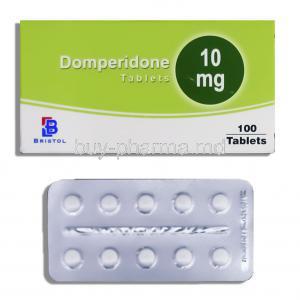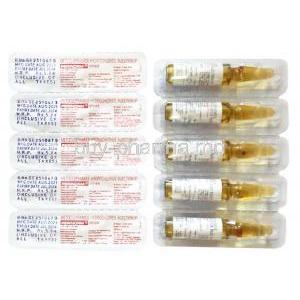Simethicone
- I. Introduction
- II. Composition of Simethicone
- III. Mechanism of Action: How Simethicone Works
- IV. Uses of Simethicone
- V. Off-Label Uses of Simethicone
- VI. Dosage and Administration of Simethicone
- VII. Administration Considerations Across Populations
- VIII. Side Effects of Simethicone
- IX. Interactions with Other Substances
- X. Warnings and Contraindications
- XI. Important Precautions in Simethicone Usage
- XII. Storage and Stability of Simethicone
- XIII. Handling Precautions for Simethicone
- XIV. Management of Overdosage
- XV. Careful Administration of Simethicone
I. Introduction
Simethicone is an agent known for its ability to relieve gaseous discomforts. It has become a staple in medicine thanks to its innovation and extensive testing. This article aims to explore the details of Simethicone, including how it's formulated and its wide range of applications.
II. Composition of Simethicone
Here are some examples of the composition of simethicone in different brands:
- Compressible sugar
- Dextrose
- Flavor
- Magnesium stearate
- Maltodextrin
- Sorbitol
- Carboxymethylcellulose sodium
- Citric acid
- Microcrystalline cellulose
- Polysorbate 60
- Potassium sorbate
- Purified water
- Sodium benzoate
- Sorbitan monostearate
- Xanthan gum 1.
1: DailyMed - SIMETHICONE tablet
III. Mechanism of Action: How Simethicone Works
Simethicone works in two ways; first, it physically acts by avoiding absorption into the body, and second, it plays a crucial role in dispersing gas bubbles. It brings together individual gas bubbles into groups so that they can be expelled quickly from the digestive system.

IV. Uses of Simethicone
Simethicone is a non-systemic surfactant that decreases the surface tension of gas bubbles in the gastrointestinal tract. This allows gas bubbles to leave the GI tract as flatulence or belching. Simethicone is not systemically absorbed from the gastrointestinal tract and is excreted in the stools. It has a short duration of action and a wide therapeutic index. Simethicone works by lubricating the GI tract so that food and fur can move out. It can make stool look dark and shiny, but it helps alleviate some of the gas1.
Simethicone is primarily used to help with problems related to gas such as bloating and feeling distended. It works quickly to bring relief. It is also helpful in getting ready for procedures, for the gastrointestinal system making it easier to see what’s going on1.
V. Off-Label Uses of Simethicone
While Simethicone is primarily used to help with problems related to gas such as bloating and feeling distended, it has been shown to be beneficial in non-GI situations where the displacement of gas can have therapeutic effects. Healthcare professionals also consider it as a treatment option often incorporating it into protocols, for its supplementary advantages2.
1: MedicineNet 2: WebMD
VI. Dosage and Administration of Simethicone
Dosage Recommendations: The recommended dosages are carefully determined for individuals of all ages, from newborns to adults. These doses are designed to achieve the results while minimizing any inconvenience. Administration Methods: Simethicone offers options for administration, including liquid and solid formulations. Each formulation is customized to suit the patient's preference and clinical requirements.
VII. Administration Considerations Across Populations
When administering Simethicone, it is essential to take into account the physiological differences that exist among elderly patients, the relevance of development in pregnant women and nursing mothers, and the delicate nature of pediatric administration. Each group requires evaluation to ensure the safety and effectiveness of treatment.
VIII. Side Effects of Simethicone
Although Simethicone is generally well tolerated with side effects, there are occasional instances of mild gastrointestinal discomfort. It's important to note that while there is a possibility of adverse reactions it's crucial to stay vigilant and seek prompt attention if needed.
IX. Interactions with Other Substances
Throughout its passage within the body, Simethicone remains consistently unresponsive. Yet, it is crucial for the prescriber to take into account potential interactions with other medications and to be mindful of food and dietary factors to ensure that the effectiveness of this substance is not compromised.
X. Warnings and Contraindications
While Simethicone is generally considered safe for relieving discomfort, there are certain situations where its use should be avoided. If you have a known allergy or sensitivity to Simethicone or any of its ingredients, it is best to steer off using it. Furthermore, if you have gastrointestinal issues where gas relief is not recommended, you should also refrain from using it. Additionally, if you are taking antacids concurrently with Simethicone, it's essential to consider potential interactions between the two. Lastly, individuals with kidney problems should consult their healthcare providers before using Simethicone under close supervision.
XI. Important Precautions in Simethicone Usage
When administering Simethicone, it is crucial to understand the person's medical condition. Pre-existing ailments like intestinal diseases require careful monitoring due to the possibility of worsening them. It is also essential to use Simethicone, especially if there is a risk of allergic reactions or hypersensitivity. Keeping track of any effects, although rare, is necessary to ensure patient safety can be continually assessed.
XII. Storage and Stability of Simethicone
The effectiveness and lifespan of Simethicone are closely linked to how it's stored. It's essential to keep the product at room temperature and protect it from heat and moisture. Paying attention to shelf life and expiry information is necessary, in ensuring the product maintains its benefits without degradation.
XIII. Handling Precautions for Simethicone
It is crucial to maintain the effectiveness of medications by following storage and disposal procedures. When it comes to Simethicone or any other medication it is important to dispose of them in a way that meets standards and avoids contamination. Additionally, when administering medications, it is necessary to use techniques to prevent any unintended contamination.
XIV. Management of Overdosage
In the event of taking too much, it is rare to experience symptoms due to Simethicone being absorbed into the body in small amounts. If symptoms do occur, the focus will be on providing support and treating the symptoms, as there is no specific antidote available.

XV. Careful Administration of Simethicone
Taking an approach to administering Simethicone involves continuously monitoring the response to treatment. This helps guide adjustments and ensures that symptoms are relieved effectively. The process of adjusting doses considers both safety and efficacy, customizing it based on an individual's response and tolerance levels.












